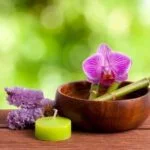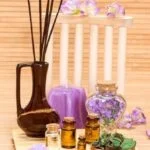Aromatherapy has been a growing trend in recent years, and 2015 was no exception. As more people looked for natural remedies and holistic wellness practices, aromatherapy gained popularity as a way to promote physical and mental well-being. In this article, we will explore the various aspects of aromatherapy in 2015, including the science behind essential oils, popular trends, and their use for stress relief, sleep promotion, mental health improvement, and physical wellness.
In the realm of aromatherapy articles 2015, it is important to understand the science behind essential oils and their impact on the body and mind. Essential oils are known for their therapeutic properties, and their use in aromatherapy can have a profound effect on overall health. Understanding how these oils work is crucial to fully harnessing their benefits.
One of the key highlights of aromatherapy in 2015 was the emergence of certain essential oils as popular trends. From lavender to peppermint to chamomile, different essential oils gained recognition for their unique benefits and uses. Additionally, specific blends became sought after for various purposes such as relaxation, stress relief, and mental well-being. Stay with us as we delve into these trends in more detail throughout this article.
The Science Behind Aromatherapy
Aromatherapy is a holistic healing treatment that uses natural plant extracts to promote health and well-being. The use of essential oils for therapeutic purposes has been gaining popularity in recent years, and in 2015, there was a significant increase in the number of aromatherapy articles published. These articles explored the science behind aromatherapy and its impact on the body and mind, shedding light on the mechanism of action of essential oils.
How Essential Oils Work
Essential oils are highly concentrated plant extracts that capture the natural aroma and flavor of the plant. These oils are produced through processes like distillation or cold pressing, which results in a potent and pure product.
When these essential oils are inhaled or applied to the skin, they can interact with the body’s olfactory system and have an impact on various physiological processes. The chemical compounds in essential oils can trigger responses in the brain, influencing emotions and mood, as well as affecting other bodily functions.
The Impact on Body and Mind
The therapeutic effects of essential oils lie in their ability to stimulate the limbic system, which is involved in emotions, behavior, motivation, long-term memory, and sense of smell. Different essential oils have different properties and effects when it comes to promoting relaxation, reducing stress, improving sleep quality, and even alleviating physical ailments.
For example, lavender oil has been shown to have a calming effect on the nervous system and may help with anxiety and insomnia. Peppermint oil has been found to have pain-relieving properties when applied topically.
Research on Aromatherapy
In 2015, there were several studies conducted on the effectiveness of aromatherapy for various conditions. Researchers looked at how specific essential oils could affect mood disorders like depression and anxiety. They also investigated the potential antimicrobial properties of certain oils for treating infections.
Overall, these studies contributed to a better understanding of how aromatherapy works at a scientific level and provided evidence for its therapeutic benefits. The abundance of research during this time period contributed to an increase in aromatherapy articles that highlighted these findings.
Top Aromatherapy Trends in 2015
In 2015, the world of aromatherapy saw a surge in popularity, with an increasing number of individuals turning to essential oils for their therapeutic benefits. Let’s take a closer look at some of the top aromatherapy trends that emerged during this time, highlighting the most popular essential oils and blends of the year.
Top Aromatherapy Trends in 2015
- Lavender: Lavender essential oil remained a staple in aromatherapy, known for its calming and relaxing properties. It was widely used in diffusers, bath products, and massage oils to promote relaxation and reduce stress.
- Peppermint: Peppermint oil gained traction as a popular choice for boosting energy and mental clarity. Its invigorating scent made it a favorite for alleviating headaches and providing a refreshing aroma.
- Frankincense: With its deep, woody fragrance, frankincense essential oil became increasingly popular for grounding and spiritual practices. It was commonly used in meditation and yoga sessions to promote a sense of peace and tranquility.
In addition to these individual essential oils, various blends also gained popularity in 2015 as holistic wellness options. Blends such as “Stress Relief” and “Sleep Support” became sought after for their unique combination of essential oils designed to address specific needs.
With an increased focus on natural remedies and holistic wellness, the use of these essential oils and blends continued to grow throughout 2015. The trend towards aromatherapy as a complementary approach to overall well-being was evident in the widespread interest in these popular essential oils and blends during this time.
As we look back at the aromatherapy articles 2015 published over the years, it is apparent that specific essential oils like lavender, peppermint and frankincense have stood out among others due to their distinct therapeutic benefits. These trends not only showcase the growing interest in alternative healing methods but also highlight the enduring appeal of aromatherapy as a means of promoting health and wellness.
Aromatherapy for Stress Relief
Aromatherapy has become an increasingly popular method for managing stress and promoting relaxation in recent years. In 2015, aromatherapy articles highlighted the benefits of using essential oils to alleviate the pressures of daily life and improve overall well-being. The use of aromatherapy for stress relief has been a major trend in 2015, with many people turning to essential oils as a natural and holistic way to manage their stress levels.
Benefits of Aromatherapy for Stress Relief
- Reduces anxiety and tension
- Promotes relaxation and calmness
- Helps improve mood and emotional well-being
- Aids in better sleep quality
Many essential oils have been found to have calming and soothing effects on the mind and body, making them ideal for stress relief. Lavender, chamomile, and bergamot are among the top essential oils used for relaxation and stress management in 2015. These essential oils can be diffused, applied topically, or added to bathwater to create a calming environment and promote relaxation.
Using Aromatherapy for Stress Relief
- Diffuse essential oils in a room or workspace
- Create a relaxing bath or massage oil blend with calming essential oils
- Use an aromatherapy inhaler or personal diffuser for on-the-go stress relief
As more research is conducted on the benefits of aromatherapy for stress relief, it is clear that this natural approach to managing anxiety and tension has gained widespread recognition in 2015. Aromatherapy articles from that year provided valuable information on how essential oils can be used effectively to promote relaxation and well-being amidst the challenges of modern life.
Aromatherapy for Sleep
Popular Essential Oils for Sleep
In 2015, several essential oils gained popularity for their ability to promote better sleep. Lavender oil, known for its calming and relaxing properties, was a top choice for many individuals looking to improve their sleep quality. Another popular essential oil was chamomile, which has been used for centuries as a natural remedy for insomnia and restlessness. Additionally, cedarwood oil and valerian root oil were also sought after for their sedative effects and ability to induce relaxation.
Blends and Combinations
One of the key trends in aromatherapy for sleep in 2015 was the use of blended essential oils to create custom sleep-promoting combinations. Many individuals turned to blends such as lavender and chamomile, or cedarwood and bergamot, to enhance the sedative effects of the oils. These unique combinations offered a holistic approach to addressing sleep issues and were highly praised in aromatherapy articles 2015.
Application Methods and Tips
In addition to using individual essential oils or blends, various application methods were favored in 2015 to optimize the benefits of aromatherapy for sleep. Diffusing essential oils in the bedroom before bedtime became a popular practice, as it allowed for continuous inhalation of the oils throughout the night.
Additionally, incorporating essential oils into massage oils or bath soaks was also recommended as an effective way to relax the body and prepare it for restful sleep. Aromatherapy articles from 2015 highlighted these techniques as valuable tools for promoting better sleep through aromatherapy.
Aromatherapy for Mental Health
Aromatherapy has been gaining attention in recent years for its potential benefits in improving mental health and well-being. In 2015, aromatherapy articles highlighted the use of essential oils to enhance mood and promote mental wellness. The year saw an increase in the exploration of using aromatherapy as a complementary approach to traditional mental health treatments.
One of the key findings in aromatherapy articles 2015 was the impact of certain essential oils on mood regulation. For example, research suggested that lavender and bergamot essential oils may have calming effects on the mind, potentially reducing symptoms of anxiety and stress. Additionally, citrus-based essential oils like lemon and orange were noted for their uplifting properties which can help improve mood and combat feelings of depression.
Furthermore, aromatherapy was also found to be beneficial in promoting relaxation and reducing psychological symptoms related to stress. Articles in 2015 reported on the use of essential oils such as chamomile, cedarwood, and frankincense for their potential to alleviate tension and create a sense of calmness.
The emergence of these findings marked an important shift towards recognizing aromatherapy as a valuable tool for mental health enhancement during 2015. As more scientific evidence surfaced about the impact of specific essential oils on mood and well-being, interest in incorporating aromatherapy into mental health care continued to grow throughout the year.
Aromatherapy for Physical Health
Aromatherapy has been gaining popularity as a natural and holistic approach to treating various physical ailments and conditions in 2015. Many aromatherapy articles in 2015 have explored the benefits of using essential oils to alleviate symptoms and improve overall physical health. From headaches to muscle pain, essential oils have been touted for their potential healing properties in addressing a wide range of health issues.
One of the key aspects of aromatherapy for physical health is its use as a complementary therapy for traditional medical treatments. Aromatherapy articles in 2015 have highlighted how essential oils can be used alongside conventional medicine to enhance the overall well-being of individuals. For example, certain essential oils have been found to reduce inflammation, relieve pain, and aid in relaxation, which can all contribute to an improved physical state.
Furthermore, aromatherapy has shown promise in promoting skin health. Essential oils like lavender, tea tree, and chamomile have been recognized in aromatherapy articles 2015 for their antimicrobial and anti-inflammatory properties that can benefit various skin conditions such as acne, eczema, and psoriasis. This has led to an increased interest in using aromatherapy as part of skincare routines and treatments.
| Physical Ailments/Conditions | Beneficial Essential Oils |
|---|---|
| Headaches | Peppermint, Eucalyptus |
| Muscle Pain | Lavender, Rosemary |
| Skin Conditions | Lavender, Tea Tree, Chamomile |
Conclusion
In conclusion, the year 2015 saw a surge in interest and popularity in aromatherapy articles. As more people sought natural and holistic approaches to health and well-being, aromatherapy became a go-to solution for many.
The science behind essential oils was explored, shedding light on how these potent plant extracts can have a positive impact on both the body and mind. The top aromatherapy trends of 2015 showcased the most popular essential oils and blends that were widely embraced for their therapeutic benefits.
Aromatherapy for stress relief emerged as a prevalent topic in 2015, with many individuals turning to essential oils as a way to manage and alleviate stress. Similarly, the use of aromatherapy for promoting better sleep gained traction, as people sought natural remedies for improving their sleep quality. Furthermore, the exploration of aromatherapy for mental health highlighted its potential in uplifting moods and supporting mental well-being.
Looking ahead, it is evident that the impact of aromatherapy articles in 2015 has set the stage for continued growth and exploration in the field of aromatherapy. As more research is conducted and new blends are discovered, the future looks promising for those seeking natural alternatives to support their overall health.
Aromatherapy is poised to remain at the forefront of holistic wellness practices, offering a wide range of benefits for both physical and emotional well-being. Therefore, it is safe to say that the trend of aromatherapy will continue to thrive beyond 2015.
Frequently Asked Questions
Is There Any Evidence for Aromatherapy?
There is some evidence to suggest that aromatherapy can have certain benefits, such as reducing anxiety and improving sleep. However, more research is needed to fully understand its impact on physical and mental health.
How Has Aromatherapy Developed Over the Years?
Aromatherapy has developed over the years from being a traditional practice in ancient civilizations to becoming more mainstream in modern times. It has evolved from using essential oils for perfumes and incense to being used for therapeutic purposes.
Are Fum Vapes Safe?
The safety of fum vapes is still a topic of debate and concern among health professionals. While they may be less harmful than traditional cigarettes, the long-term effects of inhaling vaporized chemicals are not yet fully known. More research is necessary to determine their safety.

Are you looking for a natural way to improve your health and wellbeing?
If so, aromatherapy may be the answer for you.



